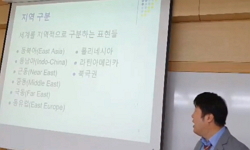17~18세기 중반에도 제주도는 지속적으로 표류민이 발생한 지역으로 해역의 변화상을 설명해 주는 좋은 사례이다. 조선후기의 자료 『漂人領來謄錄』에는 일본으로 표류했던 제주도인의 표...
http://chineseinput.net/에서 pinyin(병음)방식으로 중국어를 변환할 수 있습니다.
변환된 중국어를 복사하여 사용하시면 됩니다.
- 中文 을 입력하시려면 zhongwen을 입력하시고 space를누르시면됩니다.
- 北京 을 입력하시려면 beijing을 입력하시고 space를 누르시면 됩니다.

특집논문 : 원류(原流), 인간(人間), 교류(交流) ; 『표인영래등록(漂人領來謄錄)』속의 제주도(濟州島) 표류민(漂流民)과 해역(海域) = The Drifter of Cheju Island and the Sea Area in the 『Record of Pyoinyeongnae』
한글로보기부가정보
국문 초록 (Abstract)
17~18세기 중반에도 제주도는 지속적으로 표류민이 발생한 지역으로 해역의 변화상을 설명해 주는 좋은 사례이다. 조선후기의 자료 『漂人領來謄錄』에는 일본으로 표류했던 제주도인의 표류사례 30건이 기록되어 있다. 제주도의 표류민은 바람과 해류의 영향으로 추자도와 제주 해역에서 표류당하여 일본의 九州의 肥前州, 筑前州, 對馬島에 주로 표착하였다. 표착 후에 표류민은 長崎나 對馬島를 거쳐서 조선 동래부로 송환되었다가 제주로 돌아왔다. 조선후기가 되면 표류민의 송환은 국가 사이의 절차를 따랐는데, 이것은 자연적 현상에 인위적 체제가 작동하여 마무리되었음을 말해 준다. 제주도 표류민은 표착지에서 일본인과만나면서 일본문화를 접하기도 했다. 17~18세기 중반에 제주도 표류민의 표류 시기는 해류와 바람의 영향으로 겨울철에 많이 발생하였으며, 제주도민이 표류선에 승선한 이유는 進上을 하러 가거나 진상을 마친 이후에 제주도로 귀환하는 과정이었다. 제주도 표류민의 표류선에는 진상 외에도 무역, 추쇄 등 다양한 이유로 同船한 경우가 많았다. 17~18세기 중반에 표류한 제주도 표류민의 공통적인 특징은 일본 현지에서의 조사과정에서 출신지를 전라도의 군현으로 위장하여 換稱한 점이다. 그것은 일본에 잘못 알려진 정보 때문이었는데, 異文化에 대한 인식이 바로잡히지 않은 모습을 알 수 있다. 조선후기에 제주도 해역을 중심으로 발생한 표류민 문제는 일본뿐만 아니라 제주도 인근 국가에 표류한 사례까지 포함하여 검토함으로써 제주도 해역에서의 표류민 문제를 구체화할 수 있을 것이다. 그리고 국가적 차원에서 행해졌던 표류민 송환 문제를 동아시아 차원에서 규정함으로써 해역사 연구를 새롭게 정리할 수도 있을 것이다. 이런 차원에서도 제주도는 주목되는 지역이다.
다국어 초록 (Multilingual Abstract)
Sea area-based network during the per-modern period diversely connected major trading ports through the use of tax favors given to tributary trade based on trading or long-term trading routes at a national level. On the other hand, sea areas at a priv...
Sea area-based network during the per-modern period diversely connected major trading ports through the use of tax favors given to tributary trade based on trading or long-term trading routes at a national level. On the other hand, sea areas at a private level had multi-layered and natural characteristics. For this reason, they affected the base of tributary rule by government officials in Cheju Island to maintain their influence as sea areas. In this regard, geological sea areas can be defined through drifting, and the actual conditions of private sea area system can be clearly understood. Many studies were conducted in terms of drifting. However, studies on drifters of Cheju Island in the 17th to 18th centuries have yet to produce concrete results. It is due to the fact that control through maritime embargo imposed in North East Asia after the Japanese invasion of Korea in 1592 and stabilization of international order through tributary trade led to reduction in drifters. However, drifting and private exchanges continued within the geological sea areas, and drifters of Cheju Island continued to take place in thisregard. Cheju Island continuously served as the center of private sea areas in East Asia, and it well demonstrates changes in the sea areas. The study was concentrated on verifying the scope of geological sea area in East Asia through drifters of Cheju Island and examining exchanges in the sea area through drifters. Toward this end, drifting cases were confirmed through ‘Record of Pyoinyeongnae’ that helps understand the actual conditions of drifters of Cheju Island in the 17th to 18th centuries in order to figure out reasons for drifting, drifting process, drifting area, stay, repatriation, drifters’ status and drifters’ exposure to other cultures. Through this, the study aimed to explain that drifting was a path of cultural exchanges at a private level instead of marine accidents in the pre-modern period and define the scope of sea areas and network centering on Cheju Island.
동일학술지(권/호) 다른 논문
-
특집논문 : 원류(原流), 인간(人間), 교류(交流) ; 바다, 섬, 항구, 그리고 방언
- 제주대학교 탐라문화연구소
- 한성우 ( Sung Woo Han )
- 2016
- KCI등재
-
- 제주대학교 탐라문화연구소
- 류창호 ( Chang Ho Ryu )
- 2016
- KCI등재
-
특집논문 : 원류(原流), 인간(人間), 교류(交流) ; 화엄(華嚴)의 세계관을 차용한 제주문화공간 분석
- 제주대학교 탐라문화연구소
- 김치완 ( Chi Wan Kim )
- 2016
- KCI등재
-
특집논문 : 원류(原流), 인간(人間), 교류(交流) ; 로컬 공동체와 "차이의 공간" 생성 -암남공원 해녀공동체를 중심으로
- 제주대학교 탐라문화연구소
- 차윤정 ( Yun Jung Cha )
- 2016
- KCI등재





 KCI
KCI KISS
KISS







